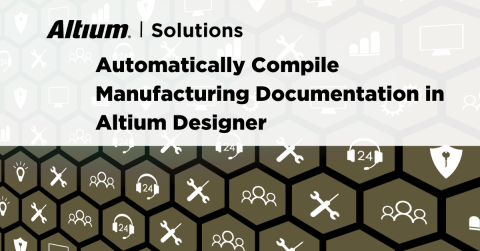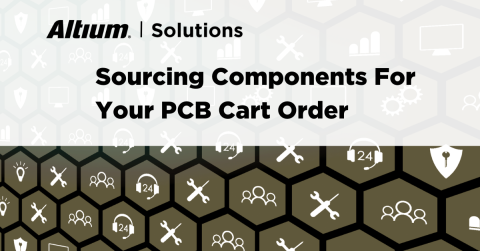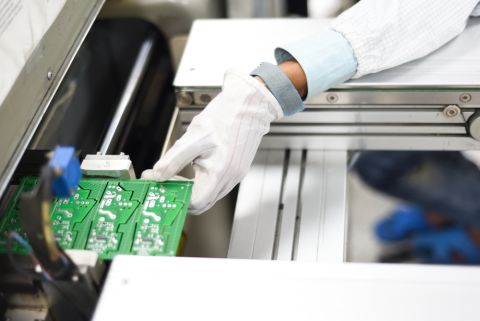Maximum Usage to Improve Supply Chain Resiliency

Discussions about the current electronics supply chain challenges abound, and many in the electronics industry are fully aware of the current supply chain issues towards obtaining components and materials in a timely and cost-effective manner. The resurgence in electronics demand brought upon the most recent supply chain issues due to global recovery from the COVID-19 pandemic and geo-political events such as the war in Ukraine. Attention is focused on electronics supply chain resiliency, not only by supply chain professionals but by electronics designers making choices on components and materials in their designs.
Given the current supply chain shortage on many components, these impacts include designs previously released to manufacturing and those designs currently in development. A multitude of resources is available to electronics designers to enable best component and material choices during the design process. These resources include state-of-the-art design platforms and component usage strategies that have the potential to improve supply chain resiliency and increase electronics designer productivity at the same time. My focus in this blog will be on strategies that I label “maximum usage” that involve a combination of perspectives, cross-functional teamwork, and leadership investments towards success in maximizing capabilities derived from electronics components.
What is Maximum Usage?
Supply Chain Diversification
Any supply chain professional will tell you that sourcing a component or material from a sole source is risky because it gives the sourcing company a more favorable position in negotiating pricing and availability. While there are cases in which sole sourcing can provide a competitive advantage for the buyer or consumer of the components, invariably, market or business conditions lead to the point that places the buyer in a non-favorable position. It is always better to work yourself out of this situation before it occurs, which is why these components should be given lots of scrutiny to seek out alternative sources or the potential of self-sourcing.
Some organizations chose a risk avoidance approach and forbade their electronic designers from choosing sole-sourced components. I believe this restrictive approach places too much burden on the electronic designer since these decisions are a complex combination of risk, cost, and product capability requirements and forecasting. My experiences in leading design and procurement teams enabled my preference to have a leadership team of electronic designers, procurement professionals, and business leaders constantly working towards the right balance in choosing sole or limited sourced components.
|
|
Managing these critical components proactively towards maximum usage led to strategic sourcing that balanced availability and cost towards ensuring customer valued capability was maximally delivered. I’ve noted amazing business results by proactively sponsoring cross-functional teamwork of high-risk/high-value component decisions, which brings multiple perspectives to bear and enables the team towards the best business outcome, not just a cost-driven or capability-driven outcome. These cross-functional “critical components” teams are a great way for individual electronics designers to learn how their decisions enable substantial business impacts. Starting with sole-sourced components and expanding the cross-functional team to operate on other critical factors such as high usage or strategically sourced.
In many companies, these teams infrequently cross paths other than long “do no buy” lists. Putting electronic designs with supply professionals towards a common business goal produces impactful business recommendations that otherwise don’t seem to appear on their own. When faced with a supply chain crisis, establishing these teams is one of the first things I do as a leader; they provide immediately useful insights. The key to longer-term retaining this capability is establishing business-level objectives and metrics; otherwise, they devolve into delivering recommendations and are de-commissioned during non-crisis times. Measures such as sustained cost savings, lead-time reduction, and inventory reduction should be combined with designer efficiency savings so that growth and profit objectives are tied together.

Re-using design elements ensures maximum usage of components across multiple designs and improves designer productivity.
Re-use Design Elements
I have been frequently mystified that it is easier to leverage or re-use design elements (components, circuits, and design elements) gathered from OUTSIDE of one’s company. Why is there less leverage and reuse of design elements from internal sources compared to external sources? Even stranger, that disparity of external vs. internal re-use held for both hardware development and software development activities! One primary difference between internal and external leverage is in marketing or communication investments, making it much easier to discover or learn about externally available opportunities.
External re-use is frequently communicated by full-time marketing or application consulting as part of the hosting companies’ business model, so it has a substantial and sustained investment. Most internal re-use activities have a smaller investment in communications and marketing because those activities don’t typically directly contribute to their companies’ business model and must be funded out of product development.
Thus, sustained investment into internal re-use processes and marketing requires sustained investment from high-level sponsors, who believe that re-using design elements ensures maximum usage of components across multiple designs and improves designer productivity. Modern electrical design tools, such as Altium Designer, are architected to make re-use easy for an electronic designer to accommodate in their unique product design. Sustained investment supporting re-use systems and communicating internal re-use availability is deeply facilitated by appointing a re-use master leader. Sponsoring re-use by measuring the design productivity and business outcomes are crucial towards sustaining the investment needed to leverage internally developed components, circuits and design elements.

Volume Buying
Another interesting behavior is that most circuit design is accomplished in small, isolated islands of designers, even in large companies. There may be large teams working on complex systems, but the system design is typically broken down into sub-components that are handed over to smaller teams. These small, localized teams have extremely efficient communications and align quickly to local best practices. That does have the side-effect of the optimization of components to the best combination of efficient usage of component capability and cost in the local design context.
That can lead to choosing more unique parts, especially those that are naturally scalable such as Field Programmable Gate Array (FPGA) components. When you consider buying these components at a company level, this spreads the usage volume across many unique components. Reducing the number of unique parts can lead to higher buying volume and lower per-unit prices. This requires a balanced approach between design requirements and buying volume and is best implemented by a cross-functional team making recommendations across the company.
Electronic designers tend to listen more carefully to other electronic designers, so leveraging this wisdom and the voices of respected senior designers is crucial for a maximum usage volume buying team recommendation. I’ve noted teams saving more than 50% of the overall annual component costs and reducing the number of unique parts by 80%, which has business-level cost benefits and simplifies the time taken by individual electronics designers to choose these components and they tend to leverage more design capabilities, especially programmable ones when fewer unique parts are utilized.
Supply chain resilience increases, and electronic design productivity improves when striving for maximum usage of components in thoughtful tactical and strategic perspectives. Consider the opportunities to dramatically increase re-use and leverage, especially within your company and to generate better business outcomes when considering a broader perspective across multiple designs and designers.
Design teams that want to de-risk their supply chains can get access to the component and sourcing data they need from the industry's best PCB design tools in Altium Designer®. To manage component data, access critical supply chain insights, and release files to your manufacturer, the Altium 365™ platform makes it easy to collaborate and share your projects.
To get the supply chain insights you need, sign up for the EDDI Report from Spectra, a division of Nexar.










